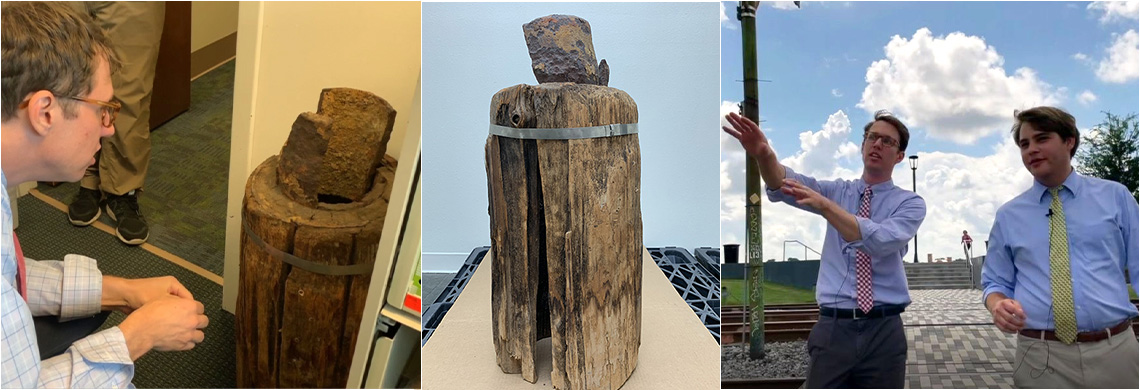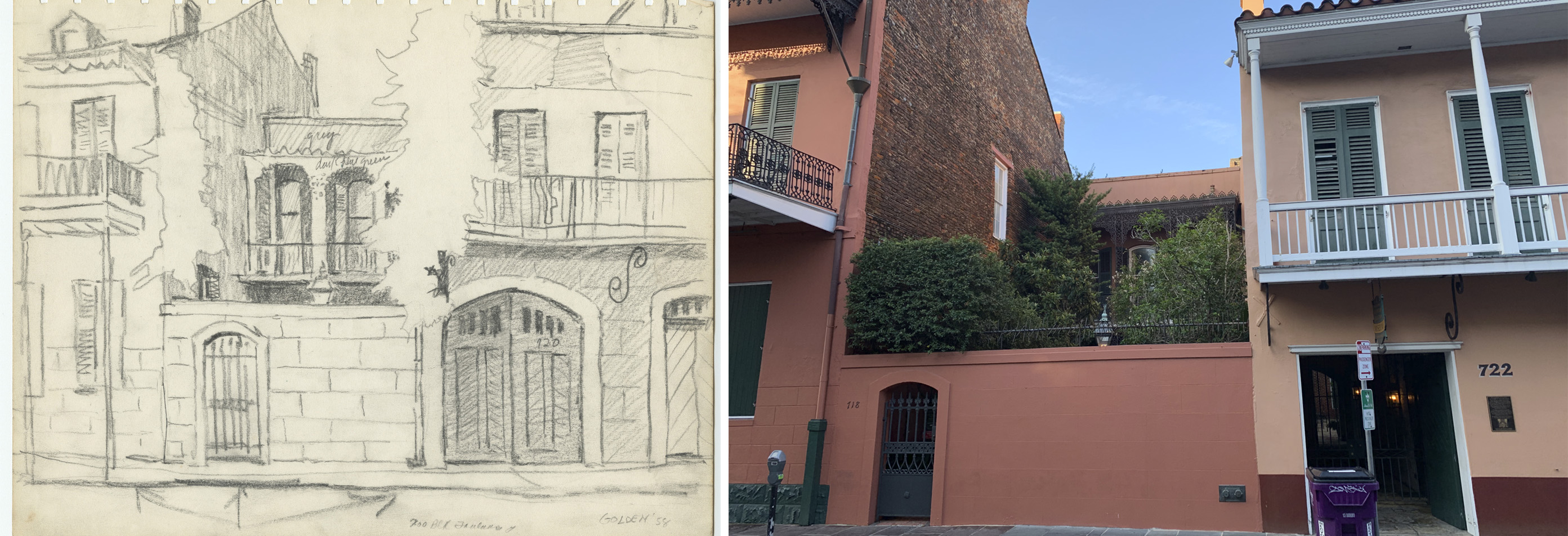RECIPE: Forget Jell-O shots, this 1885 recipe for wine jelly is your next dinner party's sleeper hit
In honor of THNOC's 2019 culinary symposium "Uncorked: A History of Wine in New Orleans," we're breaking out an old recipe from Lafcadio Hearn for Wine Jelly.
A month ago, we wrote an article about THNOC’s acquisition of an iron pipe long buried beneath Bourbon Street. It quickly became the most popular story we have posted, so we thought our readers might enjoy hearing about another recently acquired piece of antiquated infrastructure—an original city water pipe made out of cypress wood. That’s right: wood.
In 1935, fried chicken history was made—not with a clever tweet or a sandwich war, but with one man, one bird, and a timer. That year, James “Buck” Fulford set a record when he killed, plucked, cooked, and ate a chicken all in one minute and 50 seconds.
Born in New Orleans in 1931, Rolland Golden—who passed away in July 2019—spent much of his career as an artist drawing and painting Southern scenes. After serving in the Navy, Golden attended the John McCrady Art School from 1955 to 1957. Those years studying in the French Quarter began a lifelong love for the old buildings and charm of the Vieux Carré.
Daniel Hammer became president and CEO of The Historic New Orleans Collection on July 1, 2019. He is the organization’s seventh director and the first to have been raised in New Orleans—and, as such, the first to have made a profession out of rooting for the Saints.
If you’re walking down Bourbon Street on a sweltering August afternoon, you’re likely to be more concerned about the various substances puddling in the street than the infrastructure below it. But beneath the opaque streams clouded by last night’s mistakes, there are stories waiting to be told.
Calvin Dayes made shoes fit for a king, but more importantly, he made shoes fit for those who most needed them. Regardless of the reason or the occasion for his specialty shoes, each finished piece featured a truly unique label: “By the JiveAss Shoemaker.”
In the summer of 1914, a Swedish sailor in New Orleans died, and an autopsy revealed the cause to be the bubonic plague, long thought to be confined to the other side of the Atlantic.
The road to the moon passed through Louisiana and Mississippi. See how these two Gulf Coast states helped launch astronauts into history.
So much of New Orleans’s musical culture rests on its diversity, of styles, practitioners, and influences. The music of the African diaspora is a big part of this story.




















